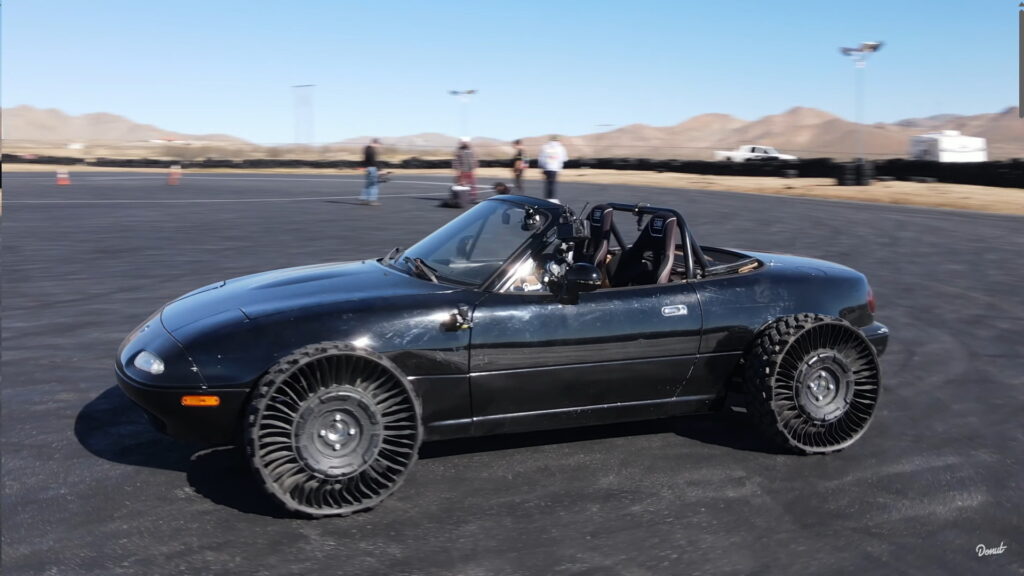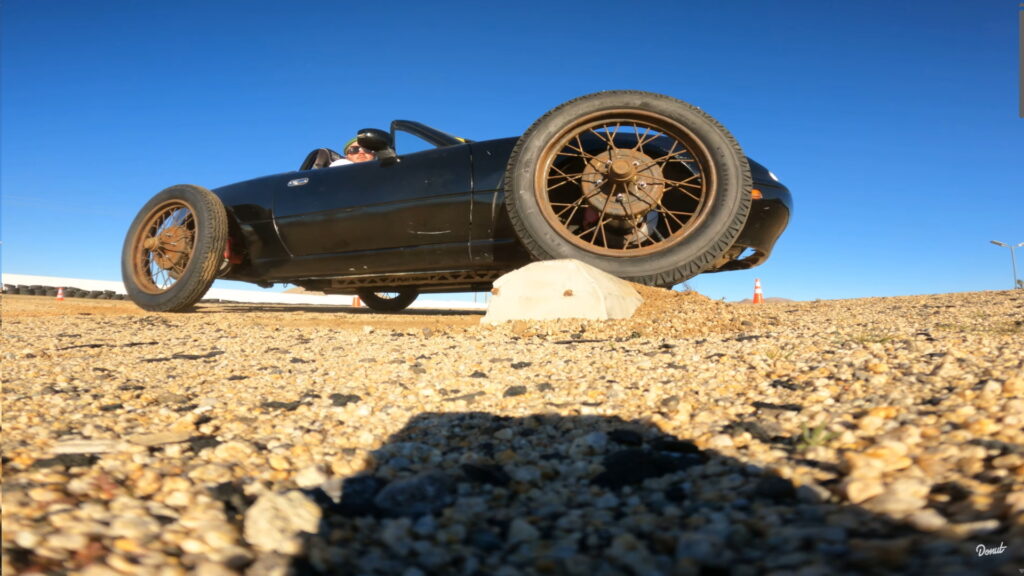<!—->
A Mazda Miata is visited by the ghosts of tire technology past, present, and future
2 hours ago
 –>
–> 
by Sebastien Bell
–>
Michelin and other tire makers have long been expounding the virtues of airless tires that can run over just about any obstacle without being punctured. So, why aren’t they on the road yet?
To find out, Donut Media put Michelin Tweels up against modern-day road tires and 100-year-old bias ply tires in a recent video to see how the technology has improved up until now, and how it will (and will need to) evolve in the future.
To find out, the team put all three sets of tires through a battery of tests to find out how they perform. To do that, they mounted the tires to their Mazda MX-5 Miata, a process that provided them with their first hurdle.
Read: GM And Michelin Testing Airless Tires, Could Offer Them On Vehicles In 2024

Whereas their Miata currently wears tires with a diameter of 22 inches, the hundred-year-old tires have a diameter of 30 inches. Similarly, the futuristic Tweels are also too big to fit within the Miata’s wheel wells.
That meant adding spacers. A lot of spacers. But ultimately they were able to find a setup that fit all three wheels, and was strong enough to go through their testing regimen.
advertisement scroll to continue
In addition to making the car look ridiculous, though, the size of the wheels hints at the purposes of them. Unlike modern wheels, both the Tweels and the hundred-year-old wheels are designed less for asphalt than a mix of dusty and dirty paths.
That means that the modern tires perform much better in the braking test, the lateral grip test, and the acceleration test, with the futuristic and ancient tires being rather closely-matched. The Tweels’ real weakness, though, comes down to heat dissipation.
The polyurethane spokes in the tires just don’t dissipate heat as well as the air in inflated tires, meaning that they tend to overheat faster. That’s one of the major hurdles facing tire engineers when it comes to getting airless tires onto public roads.
The Tweel, though, does at least perform well on the spike strip test, proving that it is as resilient as it looks.
[embedded content]
 –>
–>